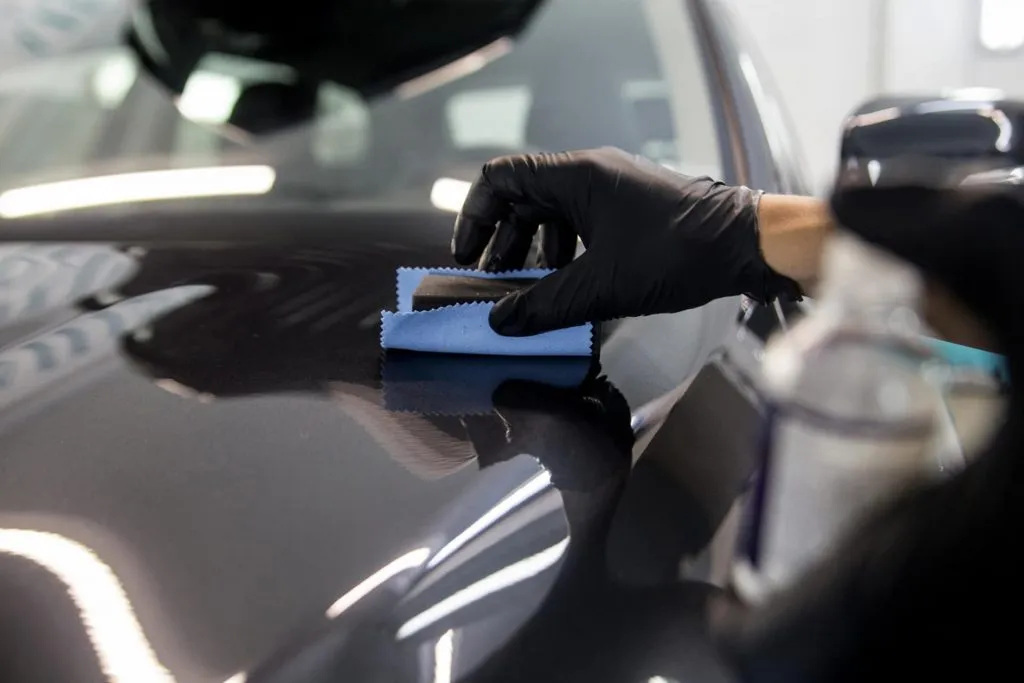When driving on the road, a car’s paint is exposed to many environmental factors such as bird droppings, tree sap, and other contaminants. This will decrease the value of your vehicle, so protection against such factors is a smart investment. Ceramic coating is a great way to protect your car’s paint. But what is the ceramic coating? What are the benefits of ceramic coating? Neighborhood Mobile Detailing in San Diego County will let you know all the answers in this article.

How Many Layers Of Ceramic Coating Do We Need?
Typically, a topcoat layer and two or three ceramic coating layers are required. Included is UV (ultraviolet) light protection.
When properly applied to a car’s body, a ceramic coating layer may offer full coverage in only two coats. In most instances, two ceramic coating layers and a top coat are enough.
This number of layers is sufficient to improve the hydrophobic properties of the ceramic coating. Following this simple procedure may prevent soil stains, dust particles, and other pollutants. This type of ceramic stacking also contributes to the treatment’s unique sheen.
How Long Should You Wait Between Coats While Applying Several Layers?
Before applying each layer, you must allow sufficient time to pass. The duration between ceramic coating layers is influenced by temperature, humidity, and the solvents employed. Before the first layer of the base coat has completely dried, the second layer should be applied. However, as the first layer may be wet, it should not be used too quickly. Therefore, it is essential to pose these questions to the ceramic coating manufacturer first. Three to four hours after the first application, apply a second layer of base coat. After 12 hours have passed since the previous base coat was applied, a topcoat may be used.
Aspects Influencing The Application Of Ceramic Coating
Before applying the ceramic coating, we should take note of these points to protect the car’s paint.
Temperature
The best temperature range for applying ceramic coatings is between 10°C and 25°C (50°F and 77°F), with 20°C (68°F) being the optimal temperature for the majority of coatings. To prevent the panels from overheating, keeping your vehicle away from direct sunlight is vital.
Direct Solar Radiation and Humidity
When applying the ceramic coating, controlling humidity and direct sunlight exposure to the utmost degree is also crucial.
The effectiveness and uniformity of a ceramic coating’s curing period will also be significantly impacted by humidity and the sun’s UV radiation. Make every effort to keep your vehicle out of direct UV sunlight for at least two days after the ceramic coating application.
Preparation
Preparation is required before applying the ceramic coating. Before applying a ceramic coating, the surface must be prepared. With enough surface preparation, the ceramic coating will adhere properly. If the surface is not properly prepared, after a few months, the ceramic coating will lose effectiveness, which is not what anyone wants!
The surface should be free of flaws to ensure that the nano ceramic coating adheres to the surface. The outside of the car should be free of dirt, dust, bird droppings, insects, grime, and other debris. If the surface has been appropriately prepared, microscopic molecules in the liquid will adhere to the surface’s invisible ridges upon application. After applying the coating, the paint surface will be very slippery.
Our experts recommend that two top coats are enough to preserve the car’s paint. Neighborhood Mobile Detailing is the top service provider in the region for applying ceramic coatings. We offer high-quality ceramic coating products applied by our team of experts. Schedule an appointment with Neighborhood Mobile Detailing in San Diego County as soon as possible. Call +1 619-848-3622 to speak with one of our team and we will come to your location to get the job done!

Leave a Reply